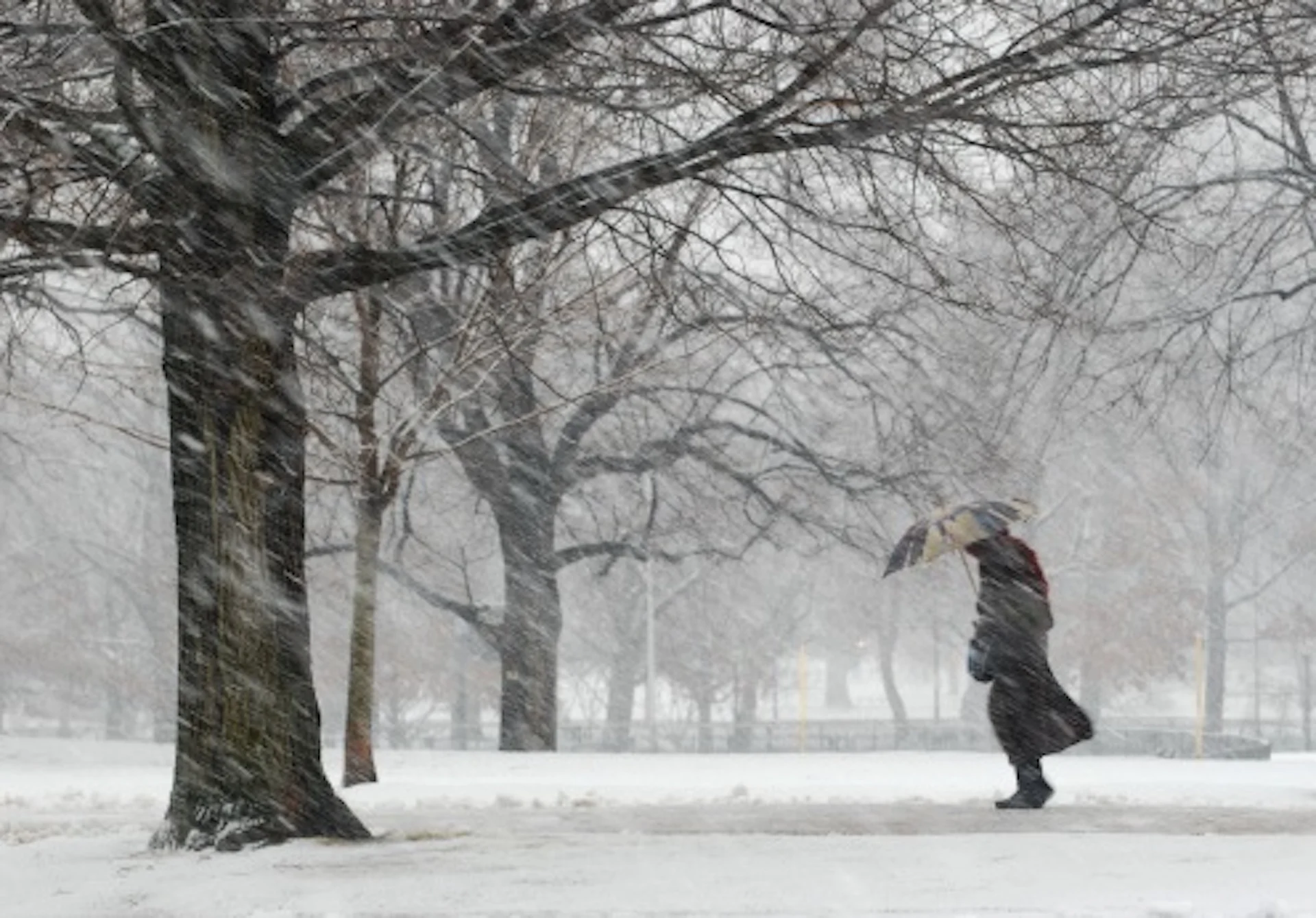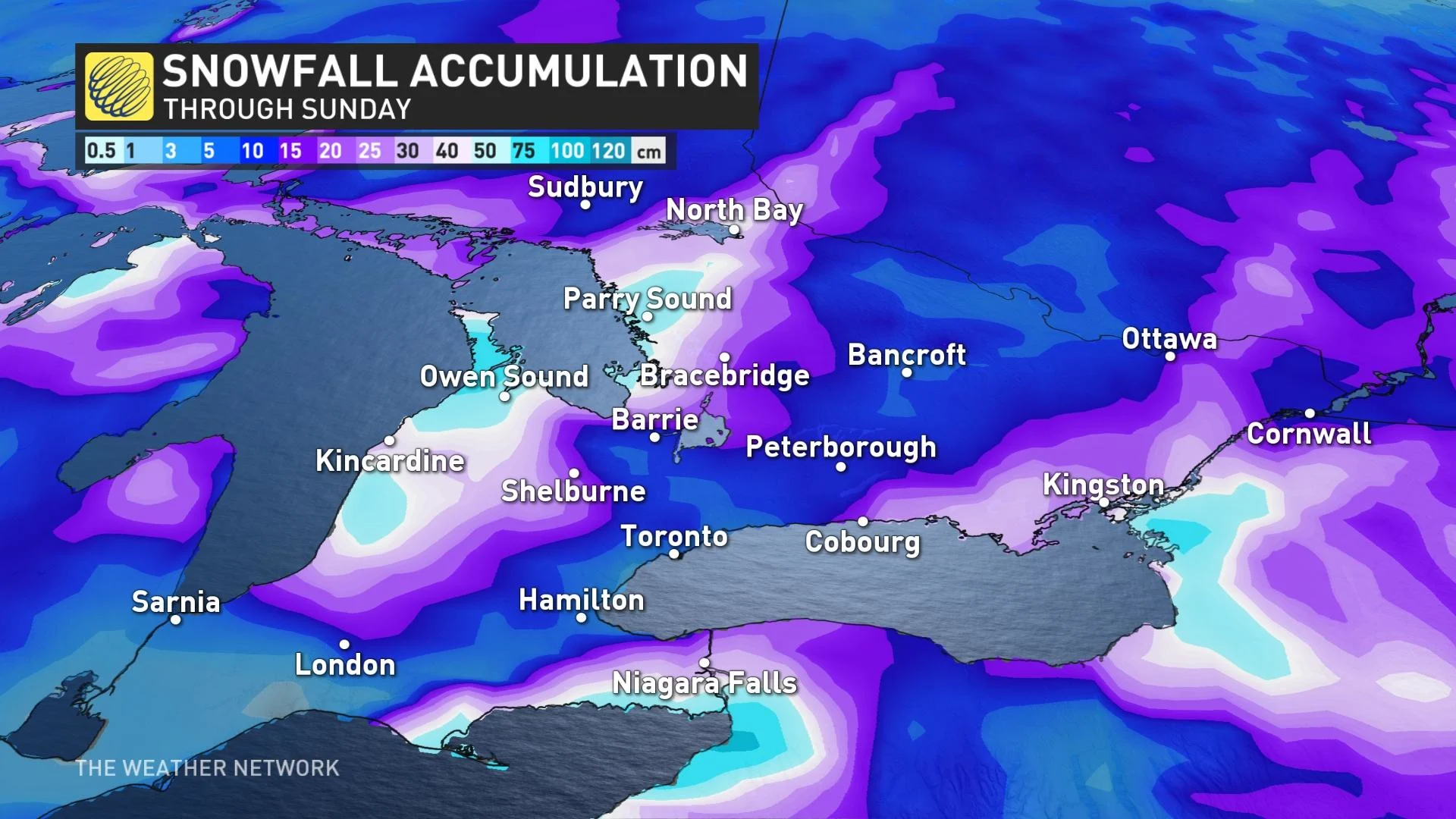
Intense squalls could bury this major city under 100+ cm of snow
Few towns know snow like Buffalo.
The snow there could pile up so deep by this weekend that a small child could get lost in their backyard. Snow could fall for days in the hardest-hit communities. Travel will be impossible at times in some areas, and the gentle snow in one town might not give any clue as to the wintry nightmare unfolding in the next town over.
The setup we’re going to see off of Lake Erie this weekend is reminiscent of what happened in western New York back in November 2014.
MUST SEE: A state of emergency was called for the Great Buffalo Blizzard of 2014
Eight years ago this week, a prolific band of lake-effect snow dumped as much as 165 cm of snow on the Buffalo suburbs, an amount so great that the region was immobilized until military personnel could help clear the streets.

GET THE LATEST: What to expect from this lake-effect event across southern Ontario
While that was a unique case and about as extreme as extreme gets—even here on the Great Lakes — the intense processes that led to Buffalo’s historic 2014 snowstorm will echo loud in the upcoming lake-effect snowfall that’ll soon bury towns on the Erie shores.
Cold southwesterly winds blowing over the Great Lakes will lead to widespread lake-effect snow across southern Ontario and western New York through this weekend. A significant temperature difference between the surface of the lakes and the air above will contribute to the severity of the bands that will set up in the coming days.
PHOTOS: Quick snap into winter with first major snow in the GTA
Many folks near the lakeshores in southern Ontario will see a hefty sum of snow by this weekend, but nobody will see quite as much as western New York.

The U.S. National Weather Service (NWS) office in Buffalo said in its lake-effect snow warning that travel could be "very difficult to impossible" beneath the strongest bands.
"Snowfall totals of up to 4 feet will be possible if the main snow band remains stationary for longer period of time," the NWS said in its warning for Buffalo and its suburbs. 4 feet is the equivalent of a little over 120 cm.







